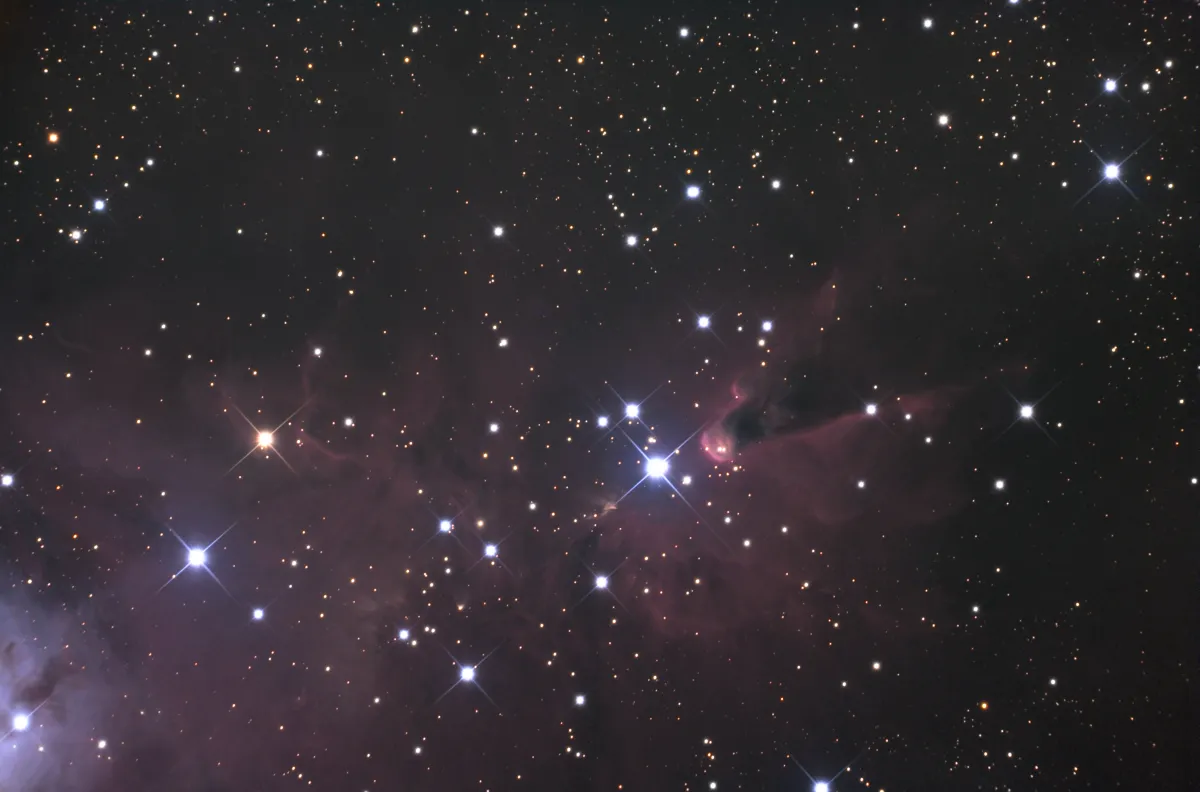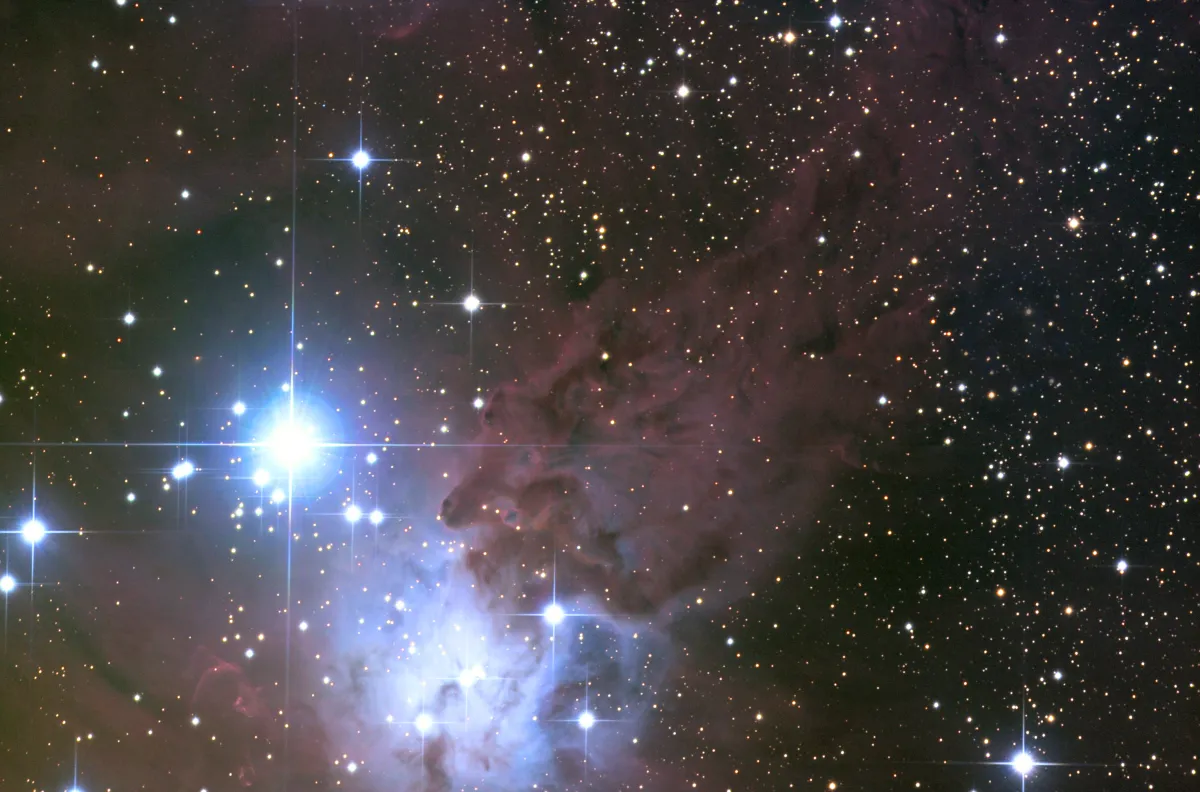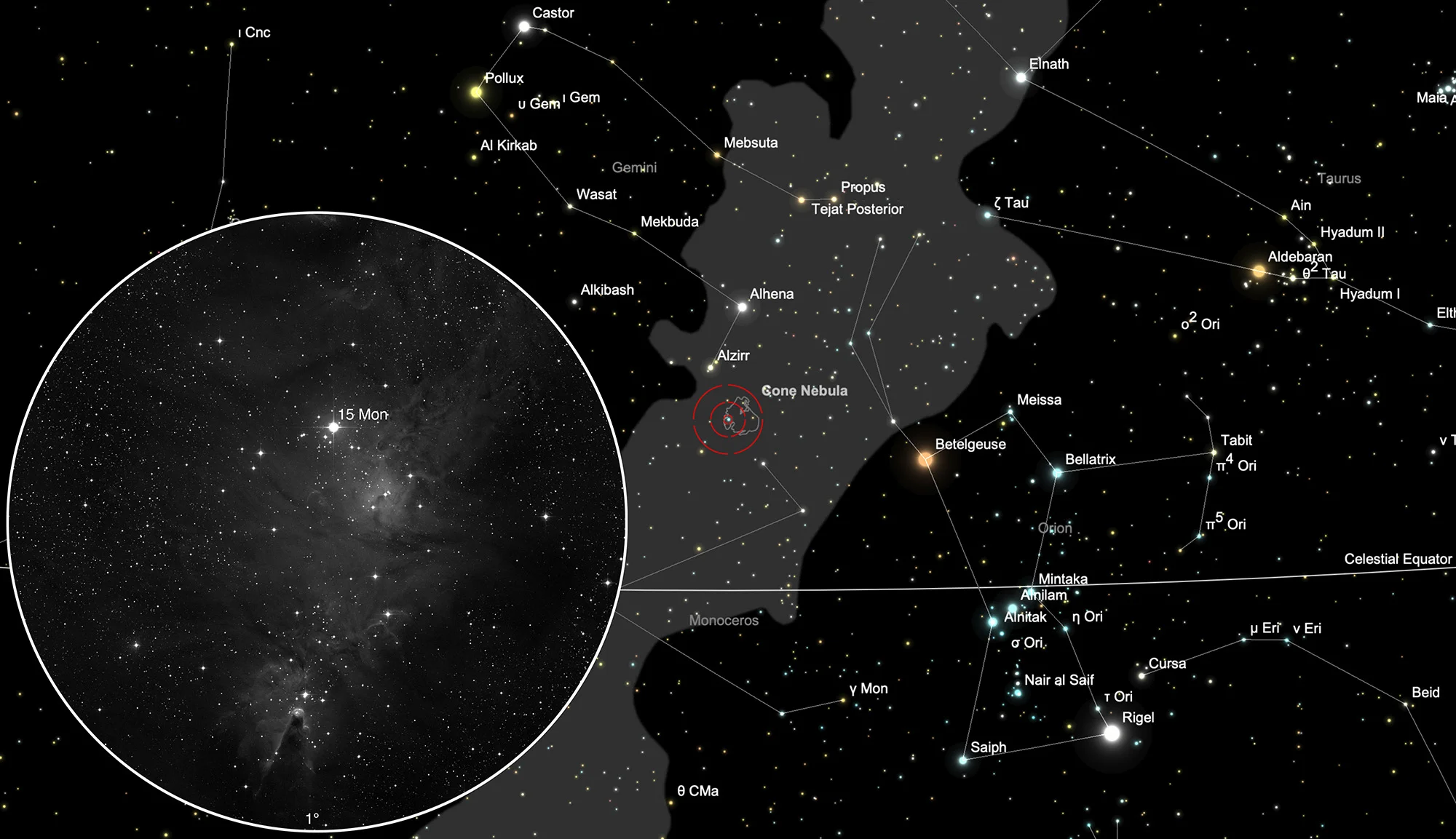NGC 2264: Christmas Tree with Conus Nebula

History
The star cluster was discovered on 18 January 1784 by the German-British astronomer William Herschel with his reflecting telescope of 18.7 inch diameter and 20 feet focal length at 157x magnification. He recorded his discovery under VIII 5 (VIII for coarsely scattered clusters of stars) and counted more than 30 stars. [463] On 26 December 1785, he again pointed his telescope at this star cluster and noticed a nebula which he recorded as V 27 (V for very large nebulae), noting: «Some pretty bright stars 7 or 8' south preceding 15 Monocerotis are involved in extremely faint milky nebulosity, which loses itself imperceptibly.» [464]
The American astronomer Stewart Sharpless searched in the 1950-ies the photo plates of the «Palomar Observatory Sky Survey» made with the 48 inch Schmidt telescope and published it in 1959 a catalogue of 313 H-II regions. In NGC 2264 he found the nebula Sh 2-273 and noted: «Appears to be connected with No. 275 with lanes of nebulosity». [310] Sh 2-275 is the Rosetta Nebula around open cluster NGC 2244.
Physical Properties
It is an IV3pn type open cluster of fourth magnitude stars shrouded in a very large nebula, the densest part of which lies southwest of the star 15 Monocerotis. NGC 2224 is part of a complex region in the constellation Monoceros, made up of dark, emission and reflection nebulae, and stars that excite or illuminate them and highlight structures.
At the southern end is the Cone Nebula, a dense cloud of gas and dust sculpted by the stellar wind from an extremely hot and bright star hiding behind a cloud. Scattered through the nebula are a number of bright stars that appear like string lights on a Christmas tree. In Fig. 1 the tree is standing upright. The Cone Nebula is at the top, and bright star S Monocerotis and the Fox Fur Nebula are at the bottom of the trunk. The Fox Fur Nebula is generally not considered part of NGC 2264, but is obviously an extension of the gas and dust cloud filling this space, which is also designated Sh 2-273 [310] or LBN 202.92+02.18 or LBN 911. [270] The open star cluster with nebula is about 2600 light-years away. [196]
| Designation | NGC 2264 |
| Type | OCL (IV3pn) |
| Right Ascension (J2000.0) | 06h 40m 58.2s |
| Declination (J2000.0) | +09° 53' 44" |
| Diameter | 40 arcmin |
| Visual magnitude | 4.1 mag |
| Metric Distance | 0.660 kpc |
| Dreyer Description | 15 Monoc, Cl, **, ? Neb |
| Identification, Remarks | WH V 27, VIII 5; h 401; GC 1440; OCL 495; LBN 911; Christmas Tree cluster |


Finder Chart
In the constellation Monoceros, almost near the left foot of Gemini, is the beautifully shaped star cluster NGC 2264. Its shape also gave it the name Christmas Tree Cluster. The base of the Christmas tree is also marked by the 4.7 mag star 15 Monocerotis. The Cone Nebula is about half a degree south of this star at the top of the inverted Christmas tree. The two mag 7.2 and mag 9.1 bright treetop stars point the way. The Cone Nebula lies in the extension of the tree trunk or at the two treetop stars. [192]
Visual Observation
355 mm aperture: With an H-beta filter and averted vision, the Cone Nebula can already be guessed at with a telescope aperture of around 14 inch. The dark cone or the pyramid is extremely difficult to see. It is then also the one bright lateral pyramid boundary that is the observation of the dark cone nebula at all possible. Truly a difficult object, but as a challenge the Cone Nebula is very worthwhile for telescopes from about 12 inch upwards. — 14" PWO-Dobson, F:4.6 / TV-Radian 8mm, 200x, 0.3° und TV-Nagler-Zoom 6mm-5mm, 266x-320x, 0.19°-0.16°, Eduard von Bergen
